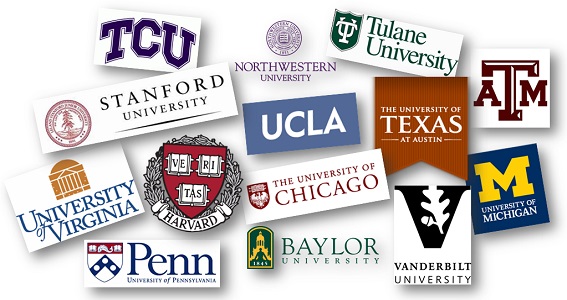Strategic Philanthropy course brings nonprofit experience to undergraduates
February 1, 2016
|
Mays Business School
 There is more to philanthropy than oversized checks, and a group of Mays Business School students are the first at Texas A&M University to learn first-hand about the steps leading up to donations. The new course on Strategic Philanthropy – the first at an SEC school – will allow students to allocate $50,000 in grant money to nonprofit organizations. First, they will spend weeks learning about the organizations vying for funds, then make presentations to their classmates to guide the allocation decisions. The students will send out requests for proposals (RFPs), conduct site visits and write grant proposals.
There is more to philanthropy than oversized checks, and a group of Mays Business School students are the first at Texas A&M University to learn first-hand about the steps leading up to donations. The new course on Strategic Philanthropy – the first at an SEC school – will allow students to allocate $50,000 in grant money to nonprofit organizations. First, they will spend weeks learning about the organizations vying for funds, then make presentations to their classmates to guide the allocation decisions. The students will send out requests for proposals (RFPs), conduct site visits and write grant proposals.
Course instructor Kyle Gammenthaler ’11, a senior academic advisor at Mays, said the course’s benefits are twofold – the students will learn about nonprofits and some local organizations will receive additional funds. “The students who have gone through the process will be comfortable sitting at a table in any board room or serving in leadership positions where they have to research projects and allocate funds,” he said. “That will give them a leg up, because no matter what you do, what role you have, you are going to encounter nonprofit organizations. Without that understanding, at worst you’re a neutral third-party observer. At best, you understand the unique rules and processes of the nonprofit world.”
Gammenthaler comes from the world of nonprofits, having worked at United Way of Brazos Valley before joining Mays. He advises two student organizations related to nonprofit consulting.
In the inaugural semester, 21 students will take 3-credit-hour upper-level elective. The first recipients will be local organizations – roughly the same coverage area as United Way of the Brazos Valley. The students will hear from guest speakers throughout the semester. They also will be asked to write a statement about their own philanthropy, then work in teams to conduct their due diligence in order to advocate on behalf of the chosen organizations.
The $50,000 grant was from Once Upon a Time Foundation, which has provided more than $4 million to build philanthropy education at 17 universities across the United States, including Baylor University, Harvard, Northwestern, Stanford, TCU, Tulane, UCLA, Chicago, Michigan, University of Pennsylvania, University of Texas, University of Virginia and Vanderbilt.
Texas A&M’s program is unique because it is offered through the business school. Gammenthaler hopes to expand it campuswide within the next few years.
The core values of Texas A&M are infused in the class, Gammenthaler said.
- Excellence: This course sets the bar high as students make funding decisions on actual nonprofit organizations. A thorough decision making process will allow for students to reach towards the fullest potential.
- Respect: There are multiple opportunities for varying opinions to arise in this course. Students are expected to maintain a high culture of respect as they discuss and debate with each other. Also, the highest level of respect should be afforded to the community organizations throughout their various interactions.
- Leadership: Students are expected to carry these philanthropic ideals into their professional careers and their lives. My hope is that their experiences afford them the opportunity to be in a position at some point to “lead the charge” in strategically impacting their communities.
Pat Dunne, who leads the Philanthropy Lab experiential philanthropy education initiative as president of the Once Upon A Time Foundation, said he finds it interesting to see how differently the 15 campuses present the materials – including philosophy, social policy, economics and sociology departments. “A neat thing about philanthropy is that it is relevant to multiple disciplines, and we have had success with good professors and strong partners regardless of department,” he said. “And I think introducing it at the undergraduate level is a good place to start it.”
Feedback from some 1,300 students indicates they appreciate the personal reflection aspect of the course. Many call it “transformational,” and several have changed career paths after completing it. “There is an intrinsic joy in giving back, but giving responsibly is not easy,” he said. “This course provides a framework for that process that we hope will benefit our students in both their personal and professional lives.”
The nonprofits that participate also benefit from the partnership in more ways than financially, Dunne said – in terms of volunteers, advocates and insight into why they didn’t get chosen for funding. “It’s a classic win-win-win,” he said. “The students, universities and nonprofits all benefit. That’s broader impact than most classes can claim.”



